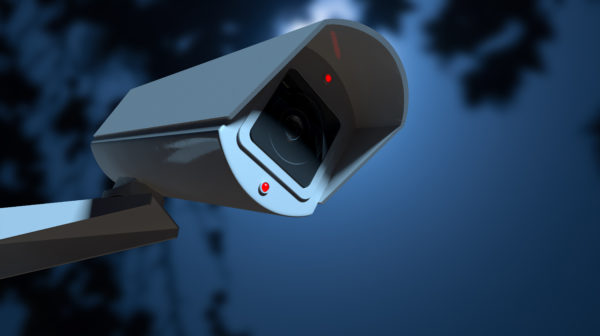The initial step in a paper scanning project is actually deciding to do one! Once you’ve established that, you’ll have to decide whether you want to do the scanning and conversion in-house (DIY) or find a scanning partner to work with. If you choose to work with a document scanning service, the task of finding the right partner can be a daunting one. “What should I be looking for?” and “where do I start?” may be some thoughts that cross your mind.
A paper scanning project can be more complex than it appears so it’s important to find a partner that can work with you and deliver the results you want. You should determine what you want to accomplish with your project (what is “success?”) and think about your desired outputs before you start to research potential scanning partners. Since digital conversion services are a bit of a niche industry, you can’t simply go to Yelp to sift through reviews. Instead, this article can serve as a guide on what things you should consider when you’re searching for a paper scanning partner.
Do They Understand Your Needs?
One of the most important things to look for in a scanning partner is whether or not they truly understand what you want and need. Every organization has different goals and challenges. With that being said, a cookie-cutter solution will not work; each scanning project requires a unique solution. In order for your scanning partner to provide you with a scanning solution that works for you, they need to first and foremost understand your scanning objectives and internal business processes.
And even if you think you know what you want, does your potential partner recommend other solutions? An important thing to look for is if they give you multiple recommendations to make your document scanning project a success based on your needs and not because they’re trying to push a sale. It’s always a good sign if it feels like they genuinely have your best interests at heart and they’re challenging you to make sure you’re not buying something you don’t need.
Where Are Their Scanning Facilities Located?
If you have a lot of paper documents at your office, then you’re probably aware of how much space they can take up and how heavy they are to move. This is why one of the things you should look into is where the potential partner’s scanning facilities are located.
Knowing the location of the scanning facilities will greatly help you with logistics planning. You’ll be able to determine your method(s) of transportation (ex. freight/truck, plane, etc.) and can get an estimate of the cost to ship your records early on. You might even have a head start on planning on how to sort and pack your documents so they’ll stay organized during transportation.
While some people may prefer to stick to a local scanning company since it’ll be logistically simpler and less expensive, it’s good to keep an open mind and not be tied to only your area. If you find the right partner, distance shouldn’t be an issue. It’ll take some additional planning and logistics, but if they’re the right fit and they’re willing to make it work, then it can certainly be done.

What Kind Of Technology Do They Have?
When you give your records to a document scanning partner to digitize, you’d like to know that they have the right technology to scan your records and properly process your images. When we say technology, we’re referring to the hardware and software that will be able to accommodate your project requirements and make it a success.
Knowing that your scanning partner has the right kind of technology to be able to successfully complete your digital conversion project is important because it gives you peace of mind that you’re leaving your important records in the hands of people that have the necessary tools to complete your project accurately and in line with the goals of your organization.
What Processes Are They Using?
Having the right technology is important but it’s virtually pointless if there’s not a process to implement them effectively! The process is what makes the project come alive.
With paper scanning projects, you can’t simply put your paper into a scanner and let the machines do all the work. There’s a lot of preparation that needs to be done before the actual scanning to make sure that the paper records are ready to be fed to the scanning machines such as removing staples, paper clips, and rubber bands, taping tears, flattening corners, and so on. There are other parts of a scanning project such as creating a job order and process flow that are instrumental in setting up the project for success. As you can see, document scanning projects aren’t simple and can get complex, which is why it’s important to see if your potential scanning partner has the process and operations to move your records from one step in the scanning project to the next in a smooth and precise manner.
In addition to seeing if they have the processes in place, you should ask them to explain their processes to you. Can they break it down for you in a way that’s easy to understand? If you ask us, we’ll describe our easy-to-understand 9-step paper scanning process that we can provide to anyone that comes to us for their paper scanning project.

What Security Measures Do They Have In Place?
Handing your documents to an outside organization can be a scary thing to do. You’re trusting someone else with your organization’s most valuable records. When your records are at a scanning facility, you’ll want to know there are multiple security procedures in place to protect your records from being seen or handled by the wrong people. If your organization has a lot of sensitive/classified documents, you’ll especially want to choose a secure scanning partner that knows how to properly handle and protect your records and data to prevent any possible data breaches.
Security is something we take very seriously. At our scanning facilities, we have physical, digital, and personnel security requirements and procedures to protect your records.
Some of our physical security procedures include 24/7 exterior and interior camera monitoring throughout our building at all access points, personalized employee entry requirements, and segregated work areas based on the level of record sensitivity where only certain designated personnel with the right security clearance are permitted to enter.
When most people think of security, they’ll think of physical security protocols. However, in the ever-increasing digital world, digital security is just as important to safely process and transmit your data. Some examples of digital security protocols that we enact are encrypted document storage & delivery (ex. secure file transfer protocol (SFTP)) and permission-based access to projects.
What Experience Do They Have Executing Similar Projects?
As we’ve mentioned before, the scanning and imaging industry is a niche market. There’s no Yelp-type platform to look through reviews of scanning services. However, seeing examples of what the scanning company has done with similar projects can be reassuring.
You can start by looking at how many years of experience that particular scanning company has in the industry. Although years of experience in itself doesn’t guarantee a project’s success, it does in some way demonstrate the company’s expertise. Some things you should look for are if they have experience working with organizations in your industry and what were the results on projects that are similar to yours. Does the scanning service have examples of projects or case studies to showcase and back up their level of expertise?

Which Certifications Do They Have?
One last thing you should consider when choosing a potential paper scanning partner is which types of certifications they have. For certain organizations, the number of certifications a document scanning company has is less significant than their experience, but for other organizations, the certifications a company has is a critical component of the decision-making process.
For example, if you work in the healthcare industry and you’re looking to scan a large number of medical records, you’ll want a company that is HIPAA-compliant so they can properly handle your medical records without violating any of your industry’s regulations. Another example is if you work for a law enforcement agency or court, you might want your scanning partner to be CJIS-compliant to know that they are equipped to deal with sensitive criminal justice information.
There are hundreds of certifications for scanning services, such as security, scanning, processing, and handling. You can easily go down the rabbit hole with all the certifications that are available so it’s important to not be too tunnel-visioned on it. Your team should decide what credentials and certifications matter most to your organization and check to see if the potential scanning partner has the certifications to show that they are qualified in those specific areas that are meaningful to you.
Conclusion
Choosing a paper scanning partner is no easy feat. Many components go into choosing the right company to work with for your digital conversion project. We’ve provided a general guideline and some questions you should ask when you’re searching for a scanning partner. Consider which factors are most important to you and make your decisions based on that. In the end, you should choose a scanning partner that you feel is competent, understands your needs, and is an organization you can ultimately trust. With the guidelines we provided, we have no doubt that you’ll be able to find the perfect paper scanning partner for you!
Next Steps
Reach out to us today! Click the “Get Your Quote” button below, fill out the form, and we’ll quickly reply to you to discuss your project.
Further Reading
“Why Should I Hire A Scanning ‘Expert?’” illustrates why you should outsource your scanning and do your digital conversion project with a scanning service instead of doing it in-house.
“Paper Scanning: 5 Frequently Asked Questions” answers questions we often hear when someone reaches out to us for a paper scanning project, such as “what are my transportation options?” and “what kind of prep work is needed?”.
“How Much Does It Cost To Scan A Box Of Paper?” provides general pricing for a paper scanning project and showcases 7 different cost factors that could affect the project pricing.

